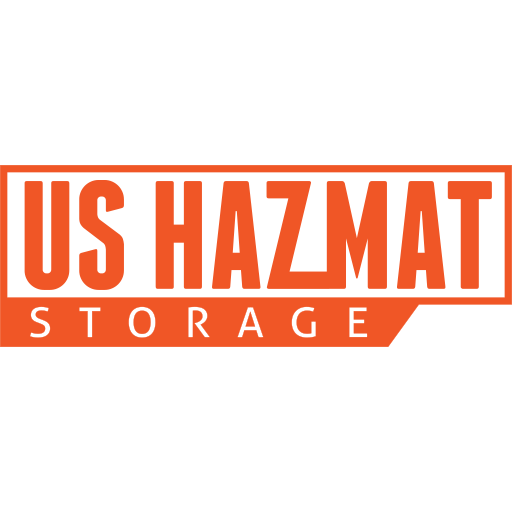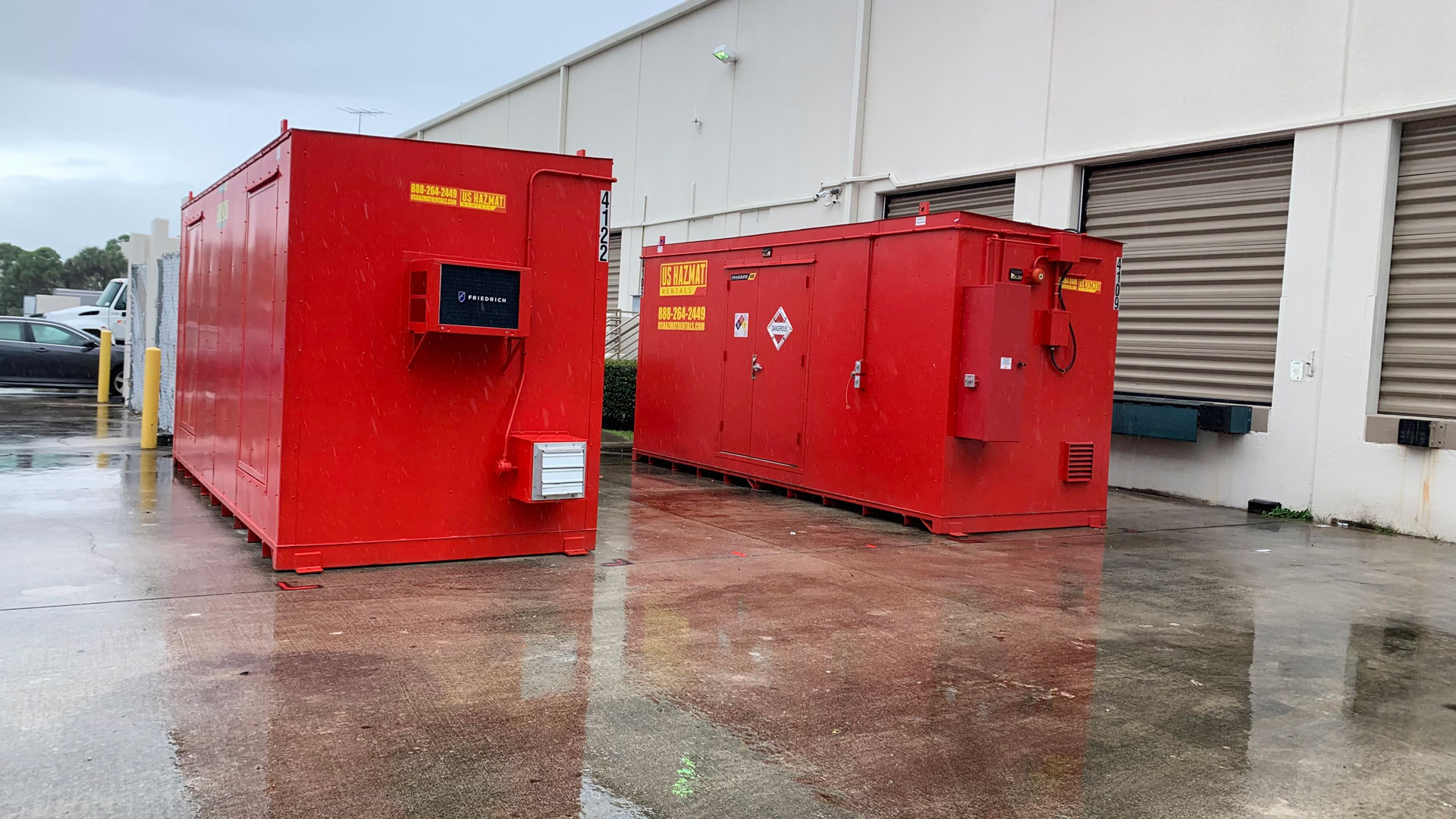Compliant hazardous waste storage is often an afterthought until mismanaged byproducts pollute the jobsite and ecosystem, resulting in excessive civil penalties. Every industrial manufacturing rendering raw materials into refined goods produces hazardous waste. Securing onsite hazardous waste storage prevents dangerous byproducts from intermixing with heterogeneous and incompatible materials, which leads to volatile chemical mixtures primed for explosion, jeopardizing workforces and vulnerable equipment. OSHA defines hazardous waste as “any substance or chemical that is a health or physical hazard, including carcinogens, toxic agents, irritants, corrosives, sensitizers, and chemicals prone to combustion, explosion and unstable flammability. Although OSHA specifically references chemical precursors in its hazardous waste terminology, machines, tools, and equipment also fits the descriptor.
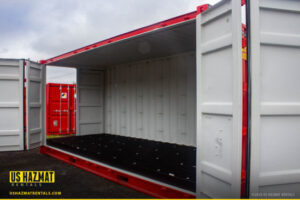
What Does OSHA Define as a Hazardous Waste?
US Hazmat Storage will meet your hazardous waste storage needs. OSHA mandates storing hazardous waste in compatible and sealed containers with proper labeling, reflecting the dangerous contaminants and mixtures within. Moreover, manufacturers should always contain hazardous waste in a secured and designated storage area, such as a flammable storage building. Our fire-rated and non-fire-rated storage options also offer mechanical ventilation and climate control, satisfying the OSHA requirement for cool and dry storage. Practitioners should also keep incompatible materials separate from host products. Companies handling or producing hazardous waste should keep containers closed and wiped down after each use. Routine drum or tote system containers should be routinely inspected for leaks or container breaches. Each chemical storage Connex conversion trailer box is also equipped with an innovative sump system, affixed to the bottom of the locker, which collects dangerous materials during a spill until safe extraction.
When Can We Classify Waste as Hazardous?
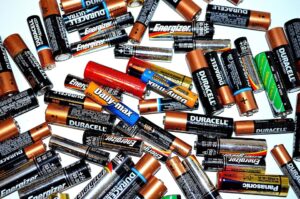
Dangerous chemicals meet the hazardous waste threshold when exhibiting unique physical properties and characteristics. Four delineated traits qualify materials as hazardous waste: ignitability, corrosivity, reactivity, and toxicity. Understanding nuance definitions and reactions better guides hazardous waste storage. The hazardous waste definition is also misleading because base or unused products can meet the classification in unused form or application, such as lithium-ion batteries.
Ignitable Wastes: Waste is deemed ignitable if the contained liquid has a flashpoint below 140 degrees or is a flammable solid, ignitable compressed gas or is an oxidizer.
Common examples of ignitable waste include:
- paint thinners, gasoline, kerosene, and other solvents
- Diesel fuel and motor oil
- Sodium metal and gunpowder
- pesticides
- flammable or compressed gas
- Paint wastes, batteries, and waste oils
Corrosive Wastes: Aqueous, or water based waste, that has a pH of 2.0 or lower or 12.5 or higher. Corrosives can corrode steel at a rate exceeding a quarter-inch per year.
Common examples of corrosive waste includes:
- Hydrochloric, sulfuric and nitric acid.
- Sodium Hydroxide
- Ammonium Hydroxide
- Bromine and Hydrogen Peroxide
- Oven, drain, and toilet bowl cleaners and car batteries
Reactive Wastes: Reactive waste is an umbrella term, encompassing various waste categories, potentially with overlapping attributes. Reactive wastes are any industrial byproduct or precursor that negatively reacts with water or are capable of releasing toxic cyanide or sulfide gases.
Common examples of reactive waste include:
- Pesticides and Herbicides
- Batteries
- Paints
- Cleaning Products
- Used Oil
- Antifreeze
- Brake Fluid
- Adhesives
Toxic Wastes
Toxic Wastes contain several hazardous constituents in a concentration equal to or greater than eight metals, six pesticides, two herbicides, ten volatile organic compounds, and 14 semi-volatile organic compounds.
Common examples of toxic wastes include:
- Batteries
- Pesticides
- Paints and Solvents
- Cleaning Products
- Automotive Fluids
- Fluorescent Bulbs and Thermostats
- Electronic Devices
- Medical Waste
- Fire Extinguishers
How Can You Determine if a Product is Considered Hazardous Waste?
Hazardous waste exhibits the characteristics of ignitability, corrosivity, reactivity, or toxicity. Chemical manufacturers and distillers provide material safety data sheets with each sold industrial chemical that is later rendered as a hazardous waste byproducts. Referencing the MSDS pictograms alerts users to potential reactions that qualify as hazardous wastes. Safety Data Sheets also include physical and chemical properties for each hazardous material, providing further context clues for potential reactivity.
What is the Difference Between Normal Waste and Hazardous Waste?
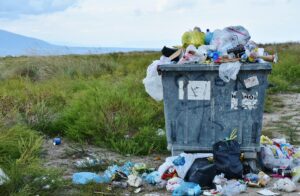
Hazardous waste is considered dangerous and highly dangerous while normal waste, such as construction debris and trash is normal waste. Although normal waste should always be thrown into trash receptacles or dumpsters, workers should never dispose hazardous waste into these waste containers.
What Does OSHA Define as Regulated Biohazardous Waste?
OSHA considers bloodborne pathogens, contaminated items that can release bodily fluids, and contaminated medical items as hazardous wastes. US Hazmat Storage’s hazardous waste storage lockers can safely accommodate all types and hazardous waste payloads. Never risk non-compliant storage. Contact us today for a free quote and consultation!

